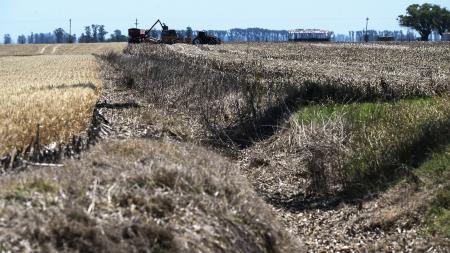The National Drought Monitoring Table identified a total of 163,612,154 million hectares under drought conditions throughout the national territory, of which 22,935,713 hectares are in a “severe” condition, which It meant an aggravation with respect to the previous report released last October.
In its last report completed at the end of November, the entity – made up of the Ministry of Agriculture, Livestock and Fisheries, the National Meteorological Service and other national and academic organizations – determined that 78 Buenos Aires districts, 17 from Córdoba, 13 from Santa Fe, nine from Entre Ríos and eight from San Luis are under severely dry conditions.
In this way, during the last month, 22.3 million hectares were added to the drought condition at the national level and 15.8 million to the severe state of the same.
In the previous report, there were 7,166,428 hectares under severe drought conditions.
In this way, they persist “the conditions of water deficit in the central region of the country”especially in the so-called core productive zone that includes the north of Buenos Aires and the south of Córdoba and Santa Fe.
Looking to the future, the fact to take into account is that during the last weekend there were local rain events, which favored the storage of water in the soil, something that so far is not enough to reverse the drought conditions.

Refering to soil moisturethe work indicated that “low values of soil moisture are observed and insufficient for the demand of those corns that were planted in the north of Buenos Aires, south of Santa Fe, south of Córdoba and west of Entre Ríos”.
All this generated the “delay in planting dates, strong impact on livestock, with unloading of fields, sale of wombs and supplementation.”
Regarding the possibilities of rain during the next week, below normal rainfall is expected, while in the second week “normal values predominate”, with temperatures also above average.
Finally, in the affected area with severely dry conditions, a higher probability of below-normal rainfall is expected for the next quarter, while higher-than-normal temperatures are expected.

















